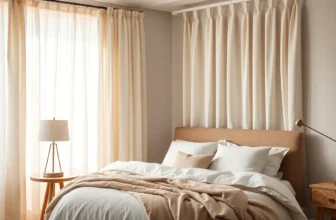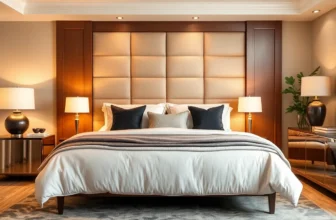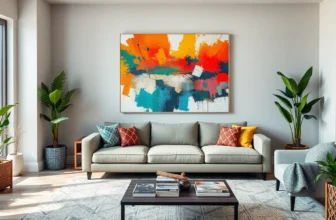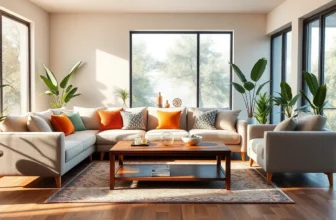Light Filtering vs Sheer Curtains – What Are The Differences?
We all want some sunshine in our lives and to be able to bask in sun rays even when inside.
However, letting the sun in our homes with no filter whatsoever can also raise the room temperature. Plus, it increases the harmful effects of UV rays.
Not to mention that without window coverings, our lives are in the open for everyone to see and our valued privacy is often jeopardized.
A metal roof is a type of roofing made from metal materials such as steel, aluminum, or copper. It is known for its durability, longevity, and low maintenance requirements. Metal roofs are resistant to fire, insects, and extreme weather conditions, making them a popular choice for homeowners. They can last up to 50 years or more, depending on the material used. Metal roofs are also energy-efficient, as they reflect sunlight and reduce heat absorption, resulting in lower cooling costs. Additionally, they are environmentally friendly, as they are often made with recycled materials and can be recycled at the end of their lifespan.
Ideally, you would want window protection that lets the sun in but protects you from its damaging effects.
Also, you don’t want every passer-by to see what’s going on inside your home. The most popular solutions to achieve this are light filtering and sheer curtains.
Each of them filters the light coming in and protects your privacy, although at different levels.
I’ll compare light filtering vs sheer curtains to see what separates them and how those differences influence their functionality. You can find most of these products online via Amazon, or higher-quality, customizable options at The Blinds Source.
| Light Filtering Curtain | Sheer Curtain | |
| Privacy | Provide moderate privacy | Offer little to no privacy |
| Light Control | Allow some light to pass through while reducing glare | Filter sunlight for a softer glow |
| Energy Efficiency | Can help reduce energy costs by keeping a room cool | Not effective for insulation or energy savings |
| Maintenance | Easy to maintain, often machine washable | Require gentle washing and careful handling |
What Is A Light Filtering Curtain?
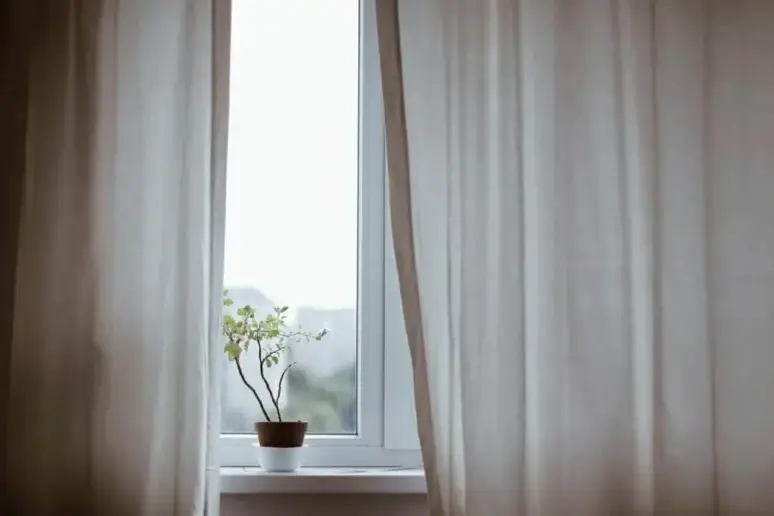
Light filtering curtains fall in that sweet spot between sheer curtains, that let in most of the light, and thicker, opaque ones that can keep the room in the total dark.
Their role is to lower the amount of light in the room and preserve privacy, while still providing enough healthy sunshine.
Light filtering curtains transform the glary sunlight into a more soft and warm glow. By doing so, they also prevent most of the harmful radiation.
Plus, they act as heat insulators, ensuring a pleasant and comfy room temperature.
Also, as they’re very light, if you open the window, light filtering curtains will allow the breeze to enter the room.
These useful properties of these curtains are possible because they are made of thickly woven materials.
Often, they’re used in combination with window shades, allowing you total control of the level of light and privacy in your living space.
Pros and Cons of Light Filtering Curtains
Choosing light filtering curtains to cover your windows will allow you to improve your living environment and enjoy the many benefits these curtains bring.
After all, that’s the reason why this type of curtain is so popular in modern interior design.
Still, there are some downsides you should be aware of.
What Are Sheer Curtains?
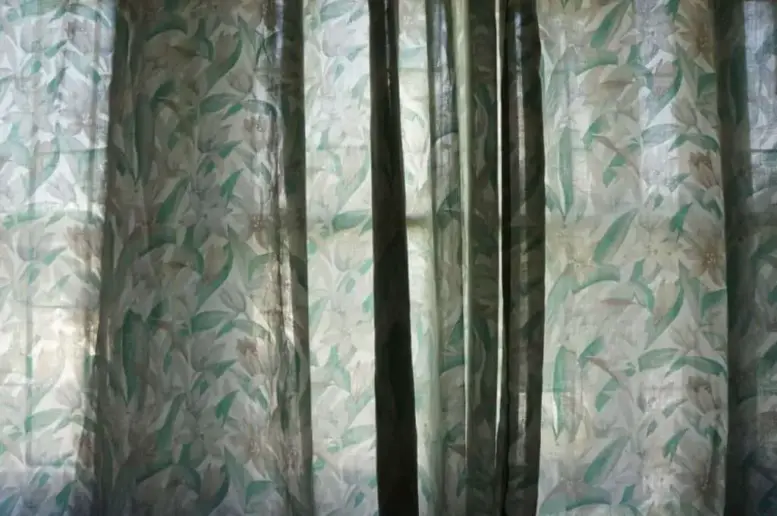
The main feature of sheer curtains is their translucency which allows the light to freely enter the room while softening some of the glare.
Their transparency is ensured by the manufacturing method used and the materials they’re made of.
Commonly, sheer curtains are made of light and thin fabrics, such as linen, cotton, polyester, voile, or some combination of these materials.
Each of these fabrics, or their combinations, is usually available in different colors and patterns.
This allows a lot of creative freedom when fitting sheer curtains to the rest of the interior design elements.
Sheer curtains have been a long-time favorite of interior designers because they allow the presence of natural light in the room, adding to the cozy and comfy atmosphere of the inside space.
The amount of light that gets through them is just enough to create a perfect soft lighting effect and increase the room’s appeal.
Pros and Cons of Sheer Curtains
When planning to use sheer curtains as window coverings in their homes, most people concentrate on the advantages they provide.
However, you should also learn about some of the drawbacks.
Light Filtering vs Sheer Curtains – What Are The Differences?
The main differences between light filtering and sheer curtains come from techniques used in their production.
While both types of curtains are made of similar materials, light filtering curtains have more texture and a denser weave.
On the other hand, sheer curtains are less thick and feature a more feathery texture. Because of this, light filtering curtains don’t let so much light in as the sheer ones.
This creates different aligning effects in the room and it’s up to your preferences which one you’ll choose.
However, light filtering curtains offer more privacy, and the difference is particularly noticeable at night.
While sheer curtains provide pretty much a clear view inside, light filtering window covering gives nothing more than a blurry image of what’s going on in the room.
They deliver better UV protection and are better for heat insulation. For these reasons, sheer curtains are often layered with heavier curtains.
Conclusion
If you’re choosing between light filtering and sheer curtains, your decision should be guided by your interior design goals.
Both these types are very elegant and will add some sophistication to any room.
Also, each of them is very versatile and available in a variety of different designs, so the fit with the rest of the elements in the space shouldn’t be an issue.
Sheer curtains provide a more light and soft appeal to the room and will allow you to enjoy more natural light.
However, if privacy and energy efficiency are among your top priorities then light filtering curtains are probably the way to go.
The good thing about both of these curtain types is that they work well with other types of window coverings.
So, if you’re looking for even more functionality or a specific style, you can easily combine them with other curtains, window blinds, or shades.

